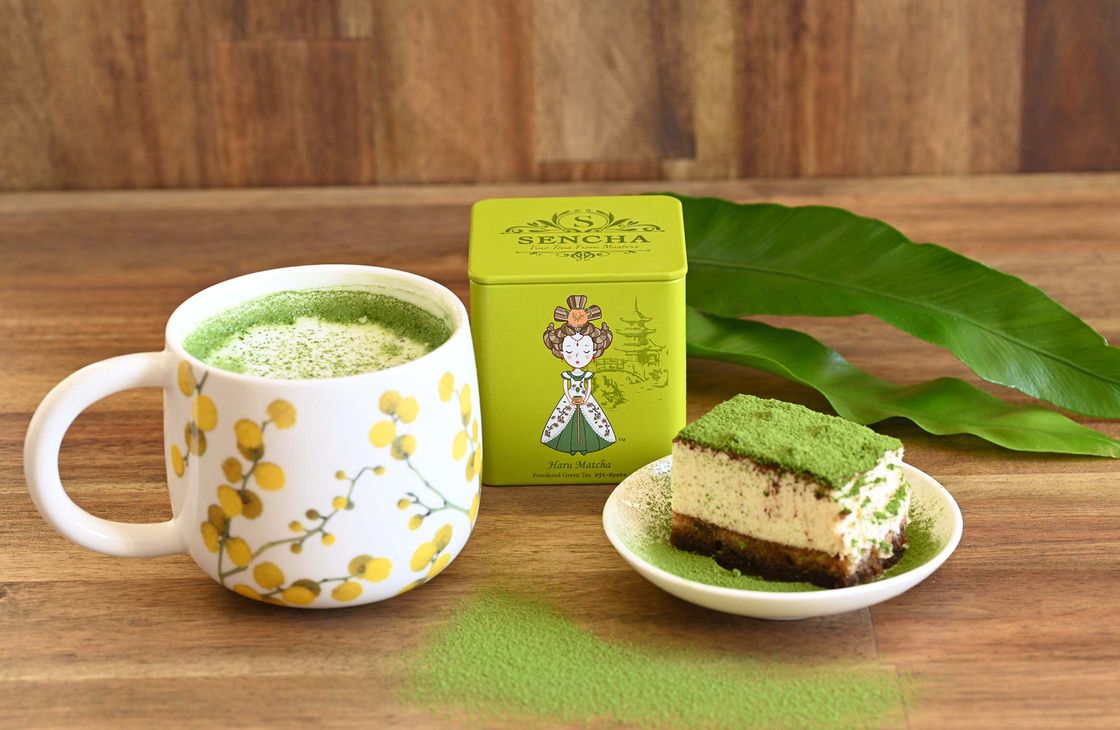
How to Make Home-Made Matcha Latte
How to Make a Home-made Matcha Latte: A Personal Ritual
There’s something wonderfully comforting about making a matcha latte at home. For me, it’s not just about the healthy drink—it’s a ritual, a quiet moment carved out of a busy day. The vibrant green of matcha, the frothiness of the milk, and the calming process of whisking all come together to create an experience that feels both grounding and indulgent.
Let me walk you through how I craft my delicious homemade matcha latte, the way I’ve grown to love it:
Tips for the Best Results
- Always use good quality ceremonial-grade matcha for lattes; culinary-grade matcha is too bitter for this purpose. Authentic ceremonial-grade matcha is known for its natural umami and sweetness, which means you typically don’t need to add any sweetener. This natural sweetness comes from the high-quality, young tea leaves used to make ceremonial matcha. The leaves are shaded before harvest, which boosts the chlorophyll content and enhances the amino acids, particularly theanine, responsible for that smooth, slightly sweet flavour. Good quality matcha matters for both reasons, superior taste and better health benefits.
- Sifting matcha powder plays a crucial role in creating a smoother, more enjoyable matcha latte.
- Adjust the matcha-to-milk ratio according to your taste preference.
- Frothing your milk well adds a luxurious texture that elevates the experience.
- Experiment with milk alternatives like oat, almond or coconut milk to find your perfect pairing.
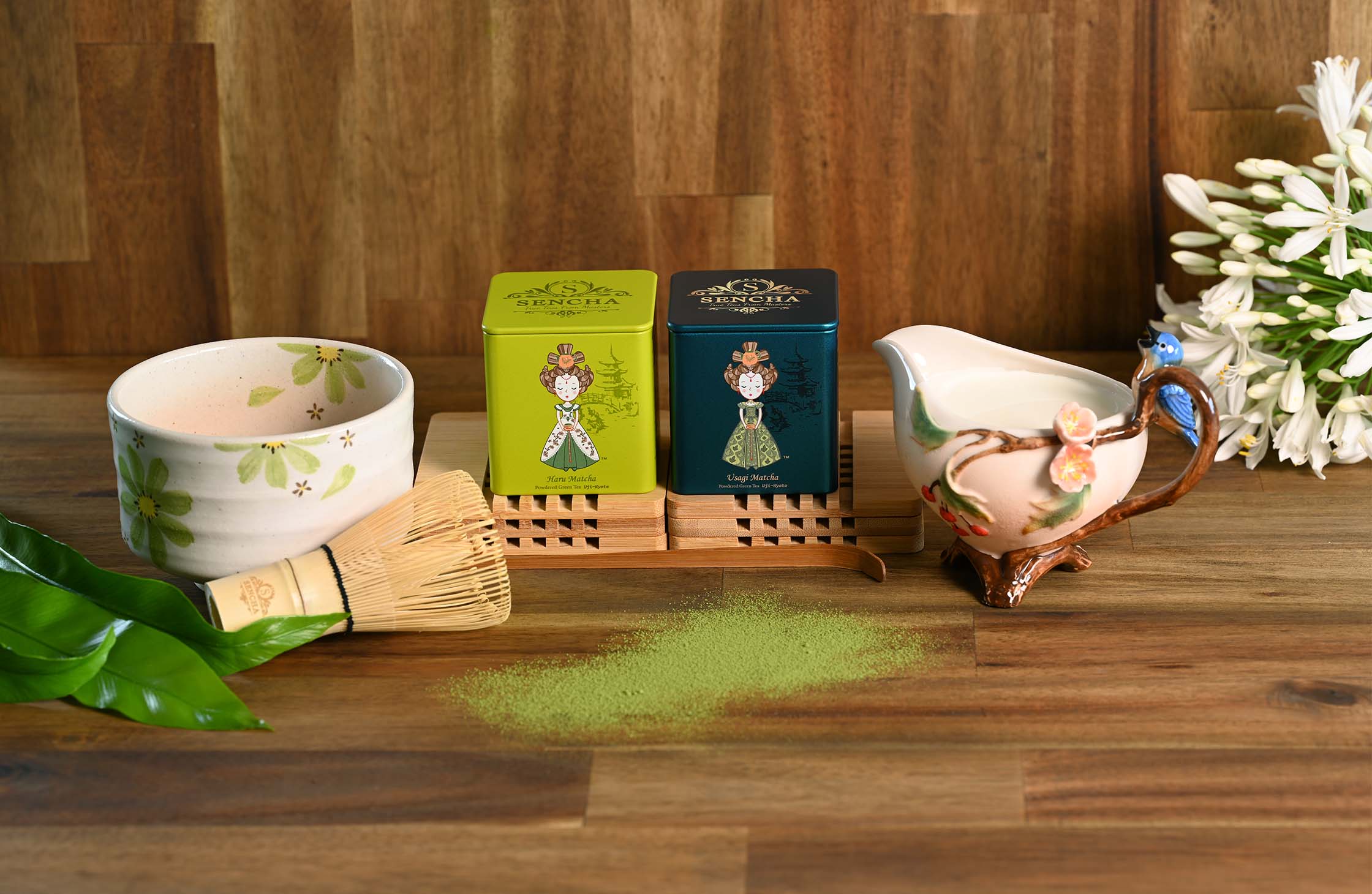
What You’ll Need
Before we begin, gather your ingredients and tools. Here’s what I use:
- Matcha powder: Just 2 chashaku or 1.5 teaspoons of good-quality, ceremonial-grade matcha makes all the difference.
- Hot water: About 150 ml at the perfect temperature—80℃.
- Milk: 100 ml of your favourite kind. I personally use full-cream milk for its creaminess, but almond or oat milk work beautifully too.
- Tools: A bamboo whisk (Chasen), a bowl, a small pot for warming milk, a milk frother, a kettle, a small strainer (optional), and my favourite mug.
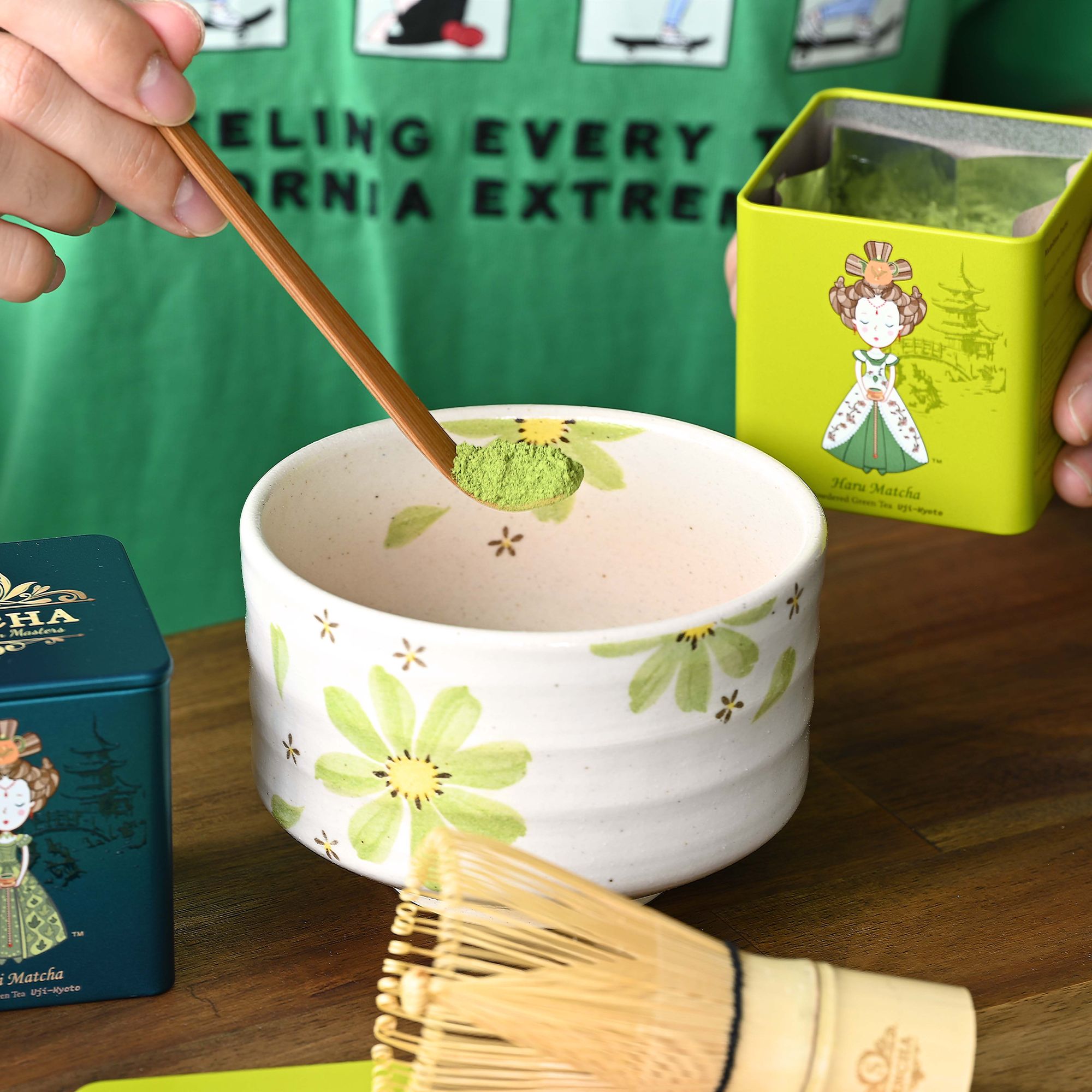
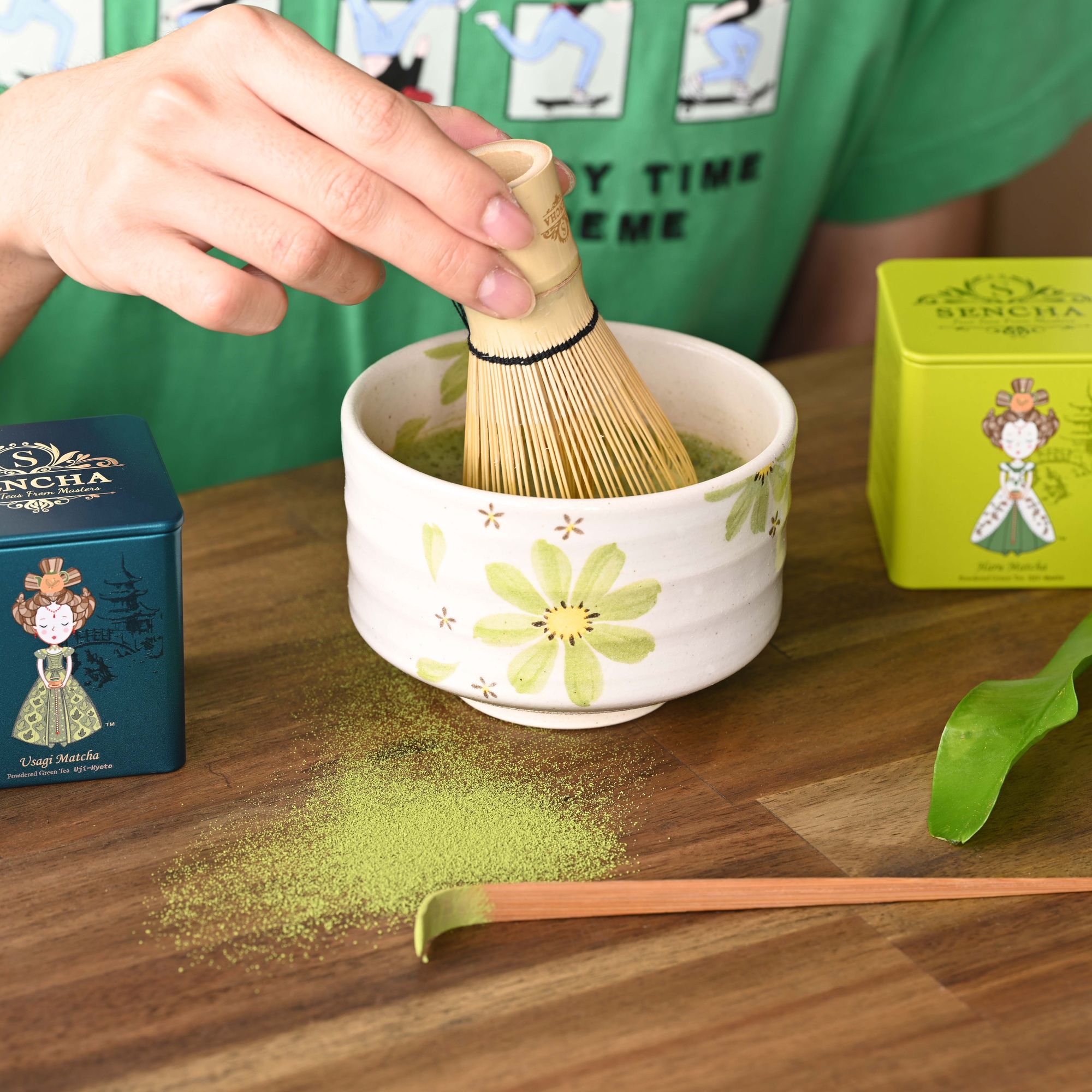
Step-by-Step Process
1. Setting the Mood
Before I start, I like to take a moment to clear my space—both the counter and my mind. Brewing matcha feels more special when it’s done mindfully.
2. Sift the Matcha
Sifting the matcha into a bowl is a small step but an important one. It ensures a lump-free latte and creates a smooth, frothy drink. Watching the fine green powder collect is oddly satisfying—a tiny reminder of nature’s artistry.
3. Whisk the Matcha
Add about 10 ml of hot water to the bowl. Using a bamboo whisk to stir the powder with circular motion to create mud-like texture, this helps to dissolve the Matcha powder better.
Pour in the rest of 140 ml hot water. Whisk vigorously in a zig-zag motion, not circular, to create a creamy froth. Keep the wrist loose and use a quick, flicking motion to incorporate air into the matcha. This creates a frothy top layer. Whisk for 20-30 seconds until small, uniform bubbles form on the surface. Once frothy, slow down and glide the whisk across the surface to pop larger bubbles and smooth out the froth.
4. Heat the Milk
To create a cloud of foam, I use a barista-style frother machine that available at home (Left image). This machine will heat and froth the milk at the same time.
I also use a hand-held frother (Right image) while traveling, a great choice for convenience. Warm the milk on medium heat (around 60-70℃), then submerge the frother’s whisk just under the surface of the milk. Turn it on and gently move it up and down to introduce air.
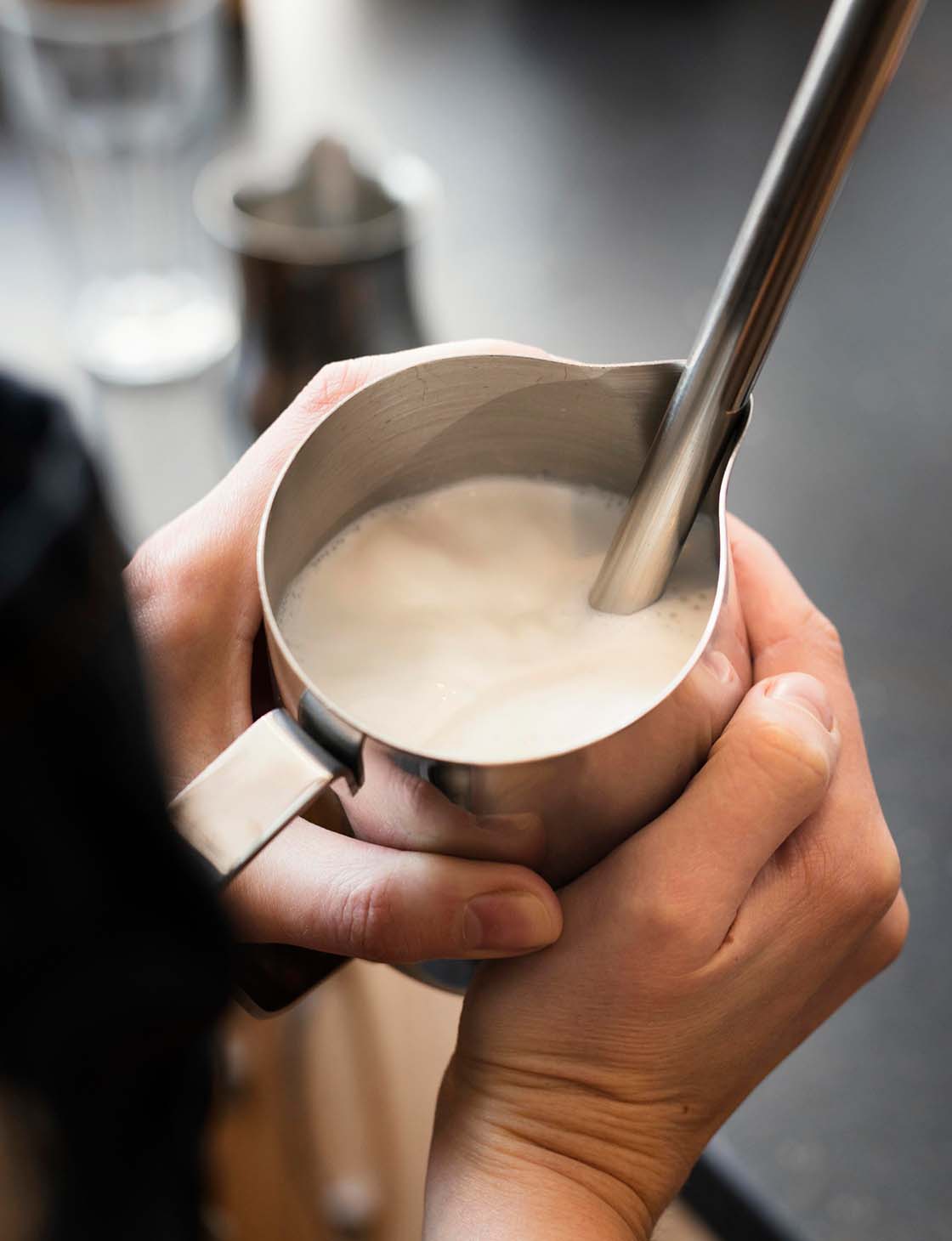
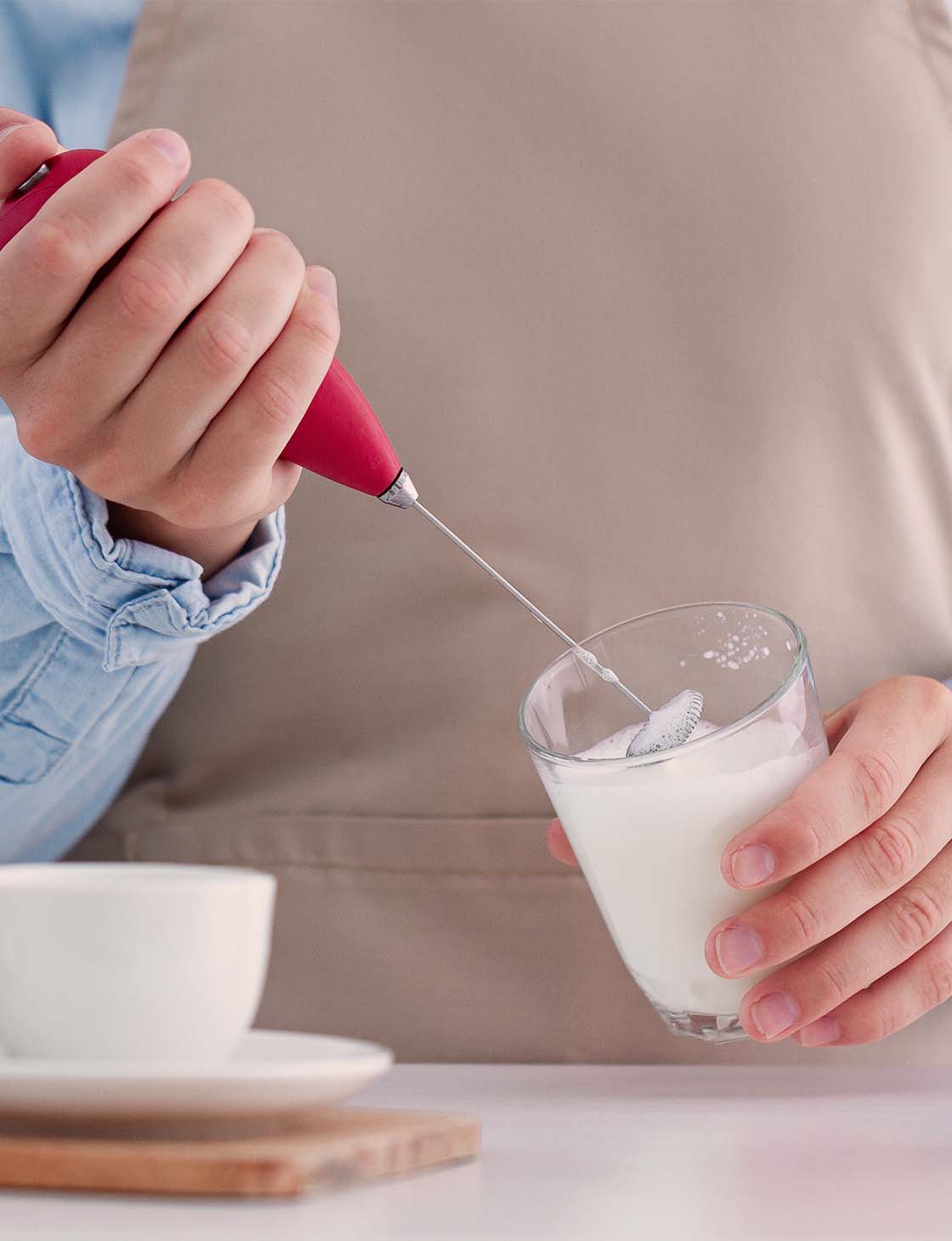
5. Combine and Sweeten
Pour the milk over the whisked matcha base, letting the two layers blend into a lush, creamy green. I personally never add sweetener because matcha has a unique taste profile: umami-rich, and slightly bitter with subtle sweet undertones when high-quality powder is used. Sweeteners can mask these natural complexities, making the drink less authentic to traditional Japanese tea culture.
However, adding sweetener to your matcha latte is entirely a personal choice and depends on your taste preferences and what you’re looking for in the drink.
Options for Sweetening Matcha Latte
- Natural Sweeteners: Honey, maple syrup, or agave nectar add subtle flavour notes.
- Refined Sugar Alternatives: Coconut sugar or stevia provide sweetness without drastically altering the calorie count.
- Flavoured Syrups: Vanilla, caramel, or lavender syrups can transform a traditional latte into a decadent treat.
6. Pause and Enjoy
This is my favourite part. I hold the warm mug in my hands and take a slow sip. The umami of the matcha, the velvety milk, and the faint sweetness all mingle in perfect harmony. It’s like a tiny moment of zen in a cup.
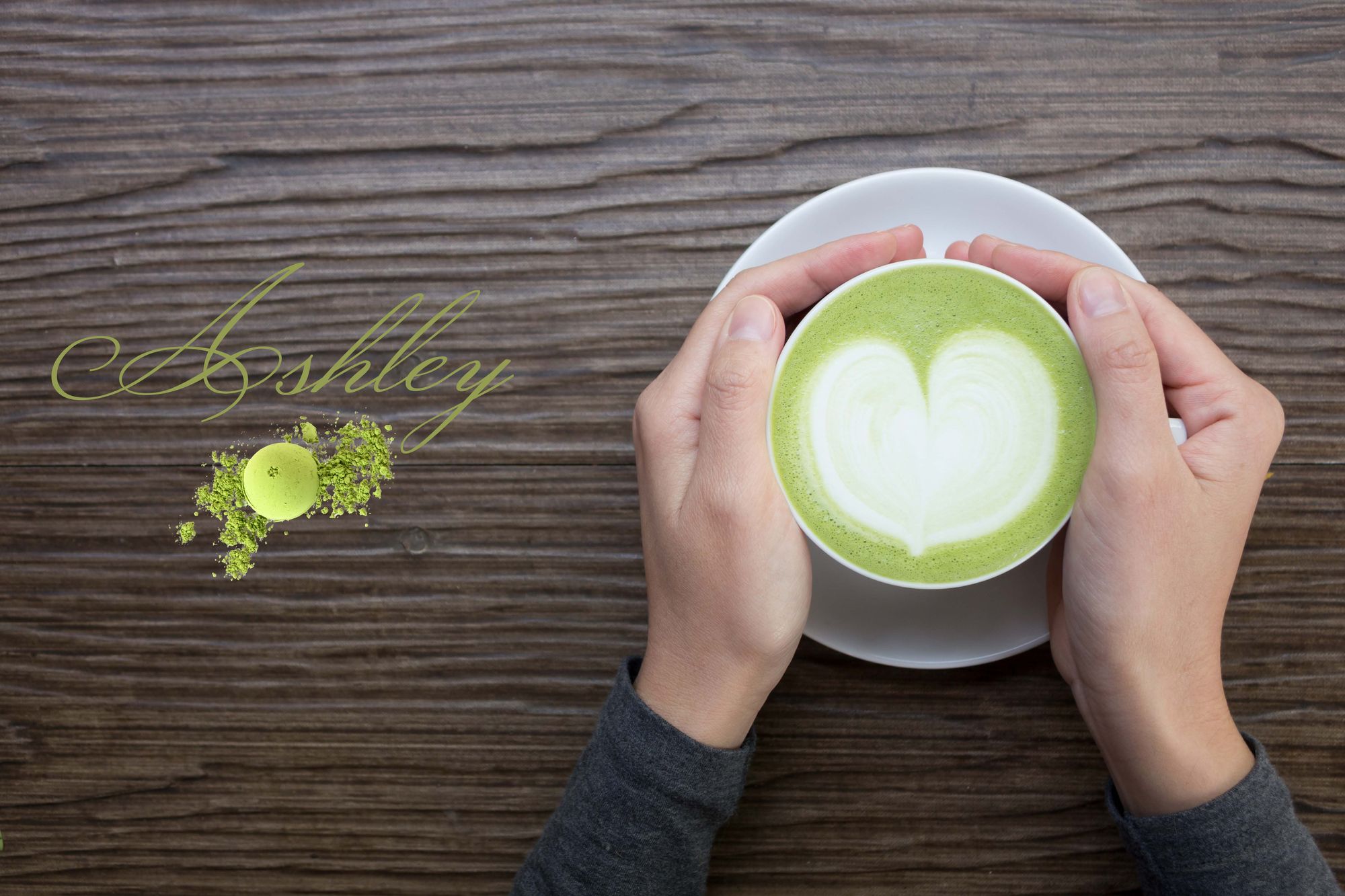
Why It’s Worth Making at Home
Crafting a matcha latte yourself lets you control everything—the quality of the matcha, the sweetness, the creaminess. It’s a small ritual that brings comfort, creativity, and a connection to the simplicity of tea.
If you’re someone who craves a little peace in your day, I can’t recommend this enough. For me, this ritual isn’t just about making a drink; it’s about making time for myself. And every sip feels like a reward.

